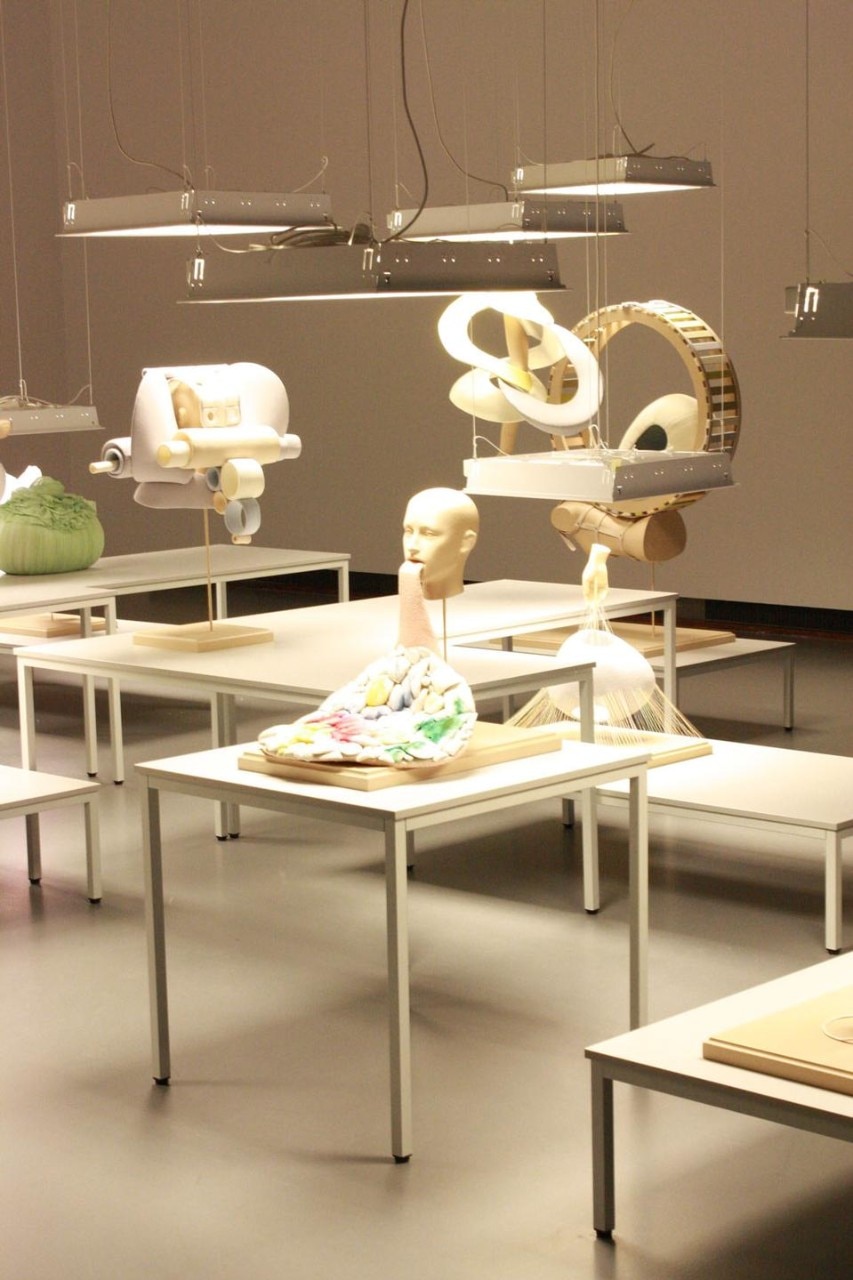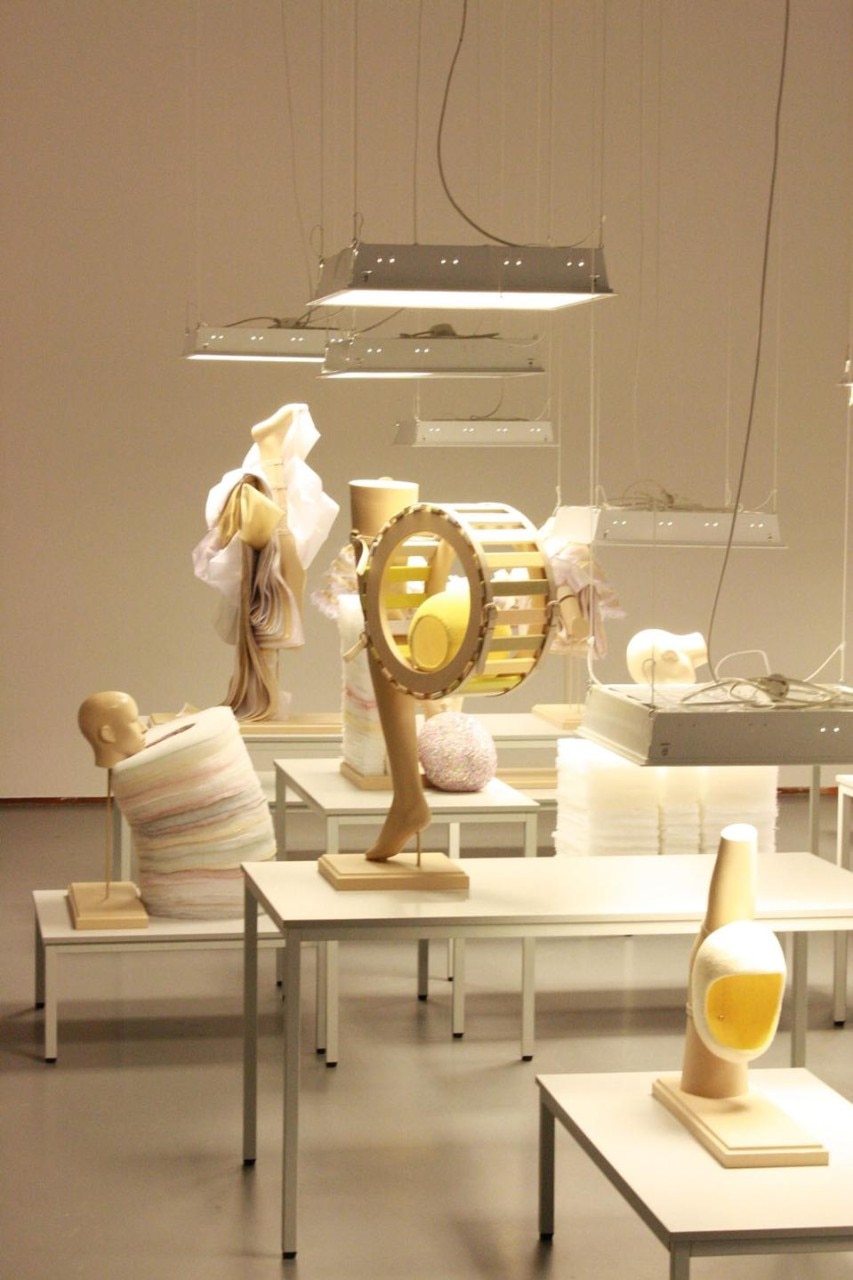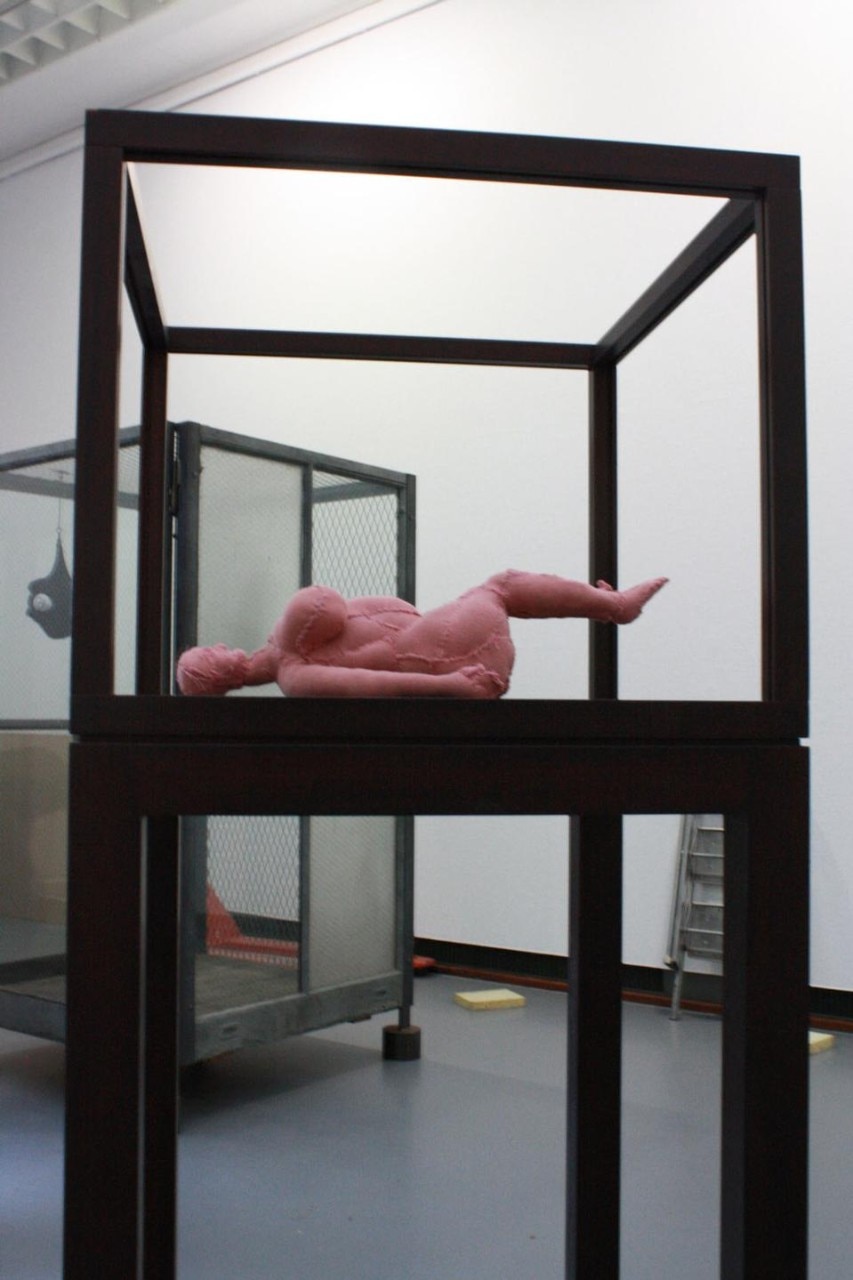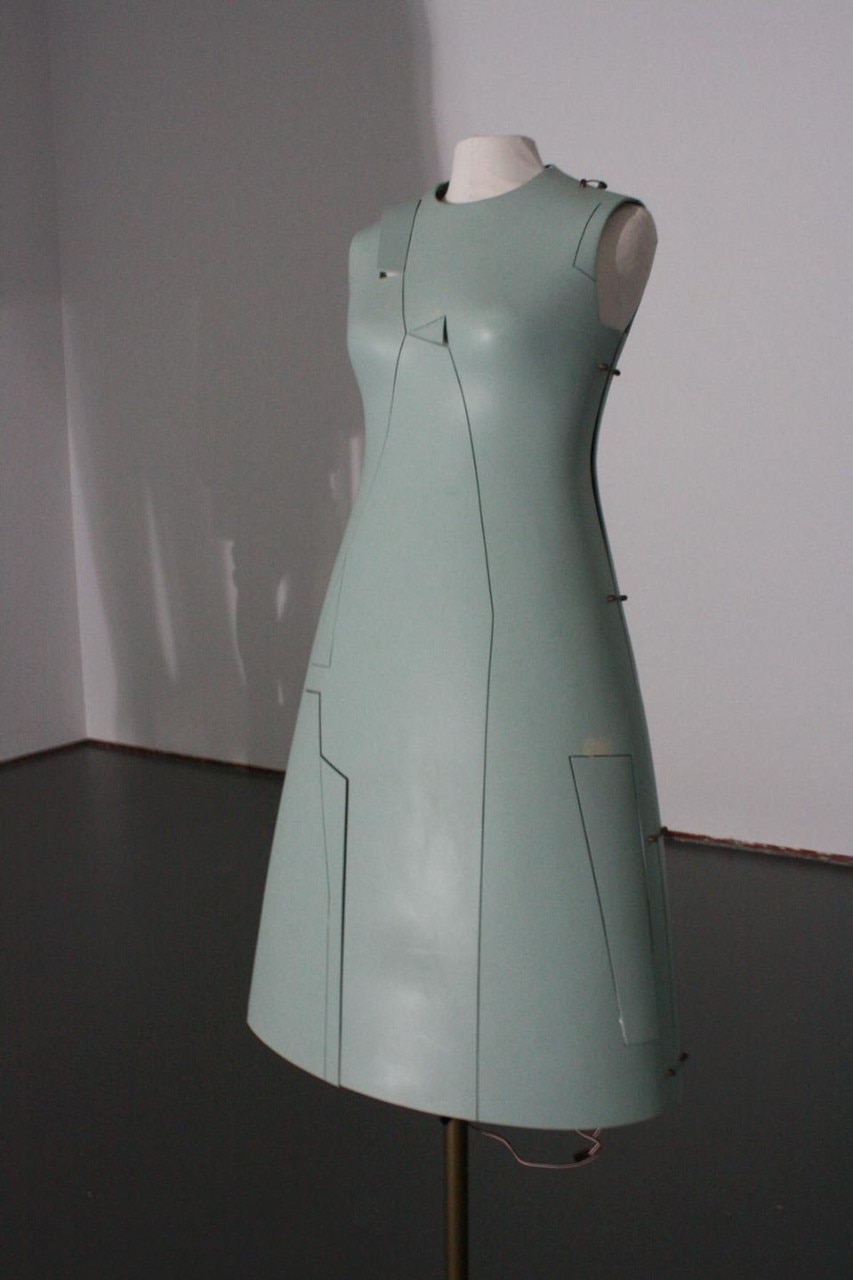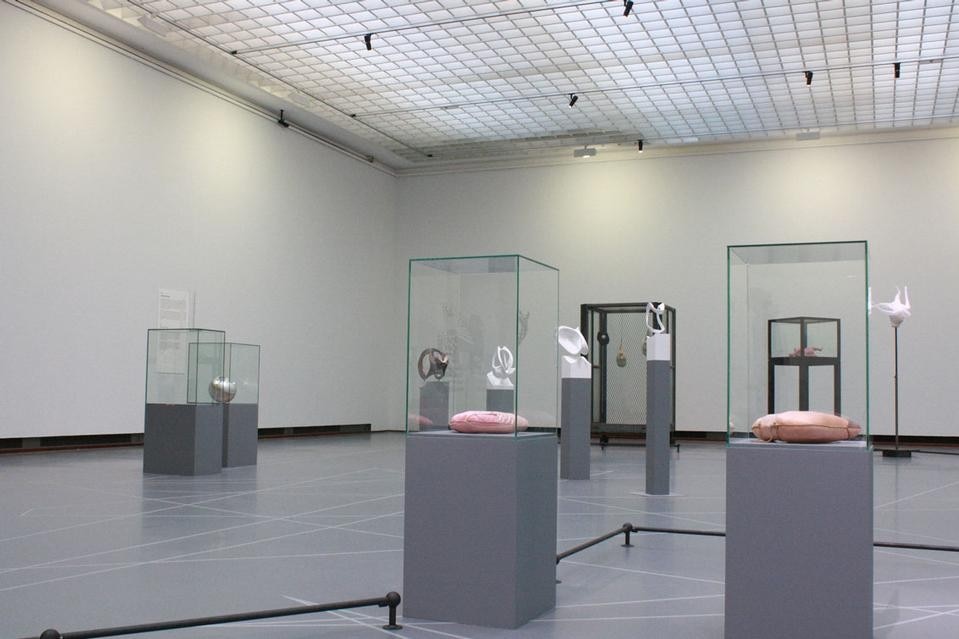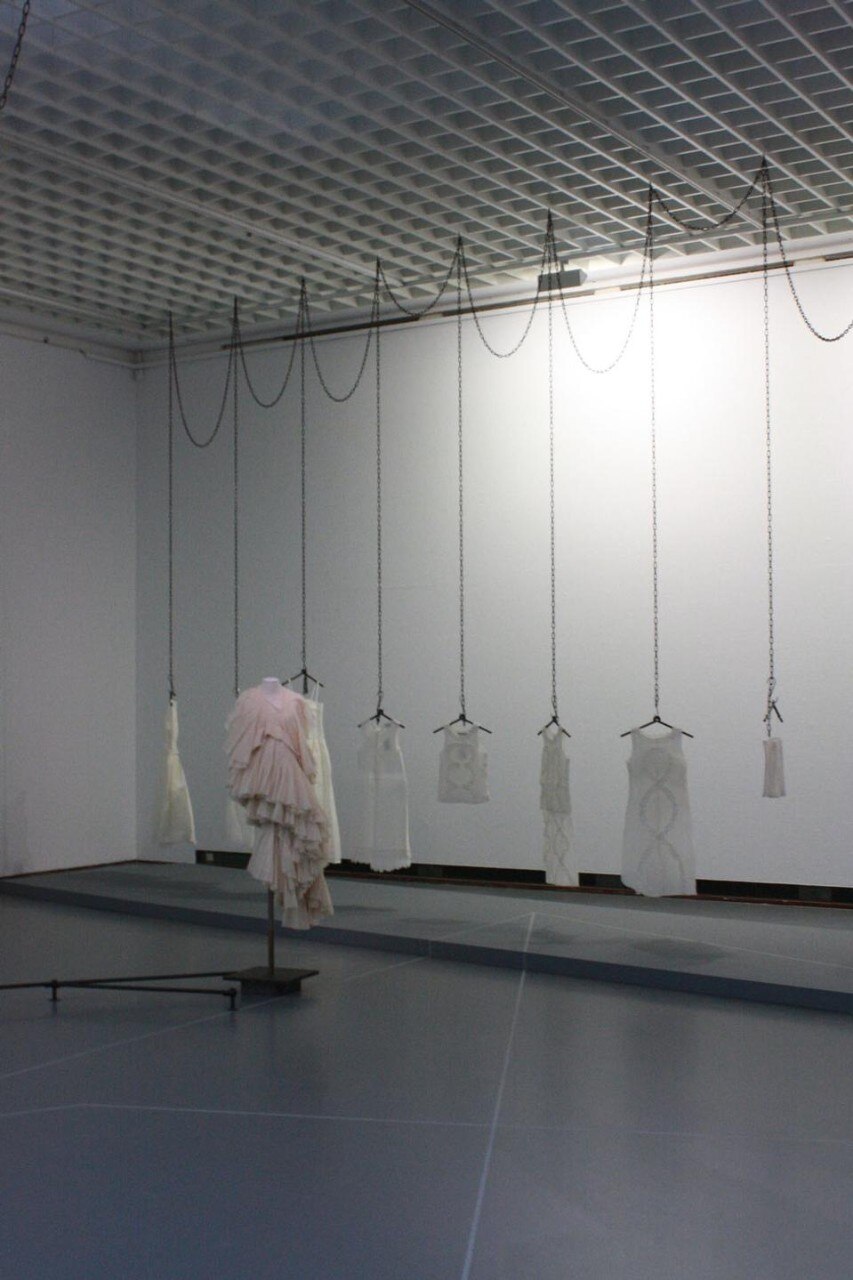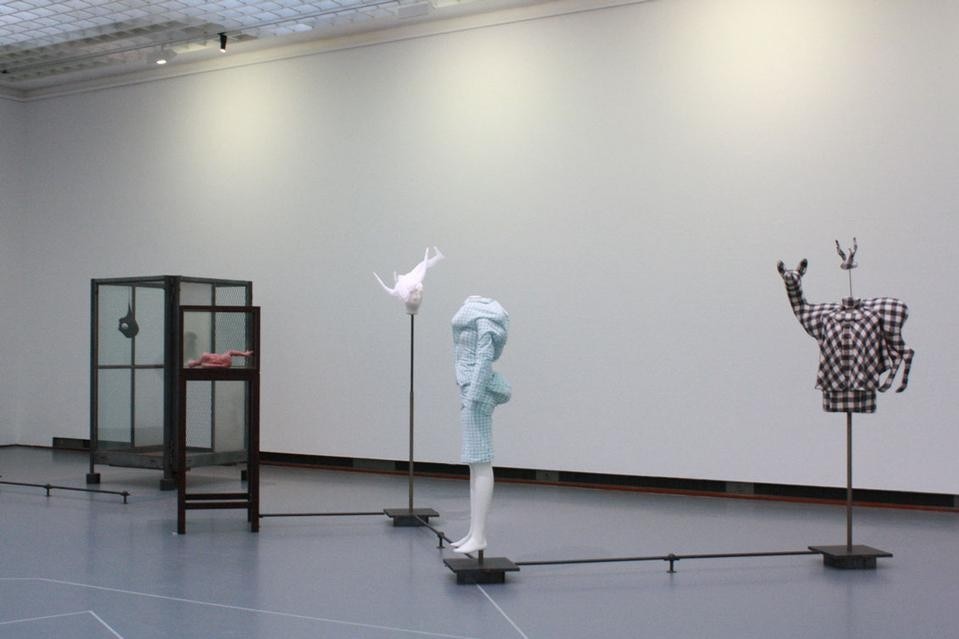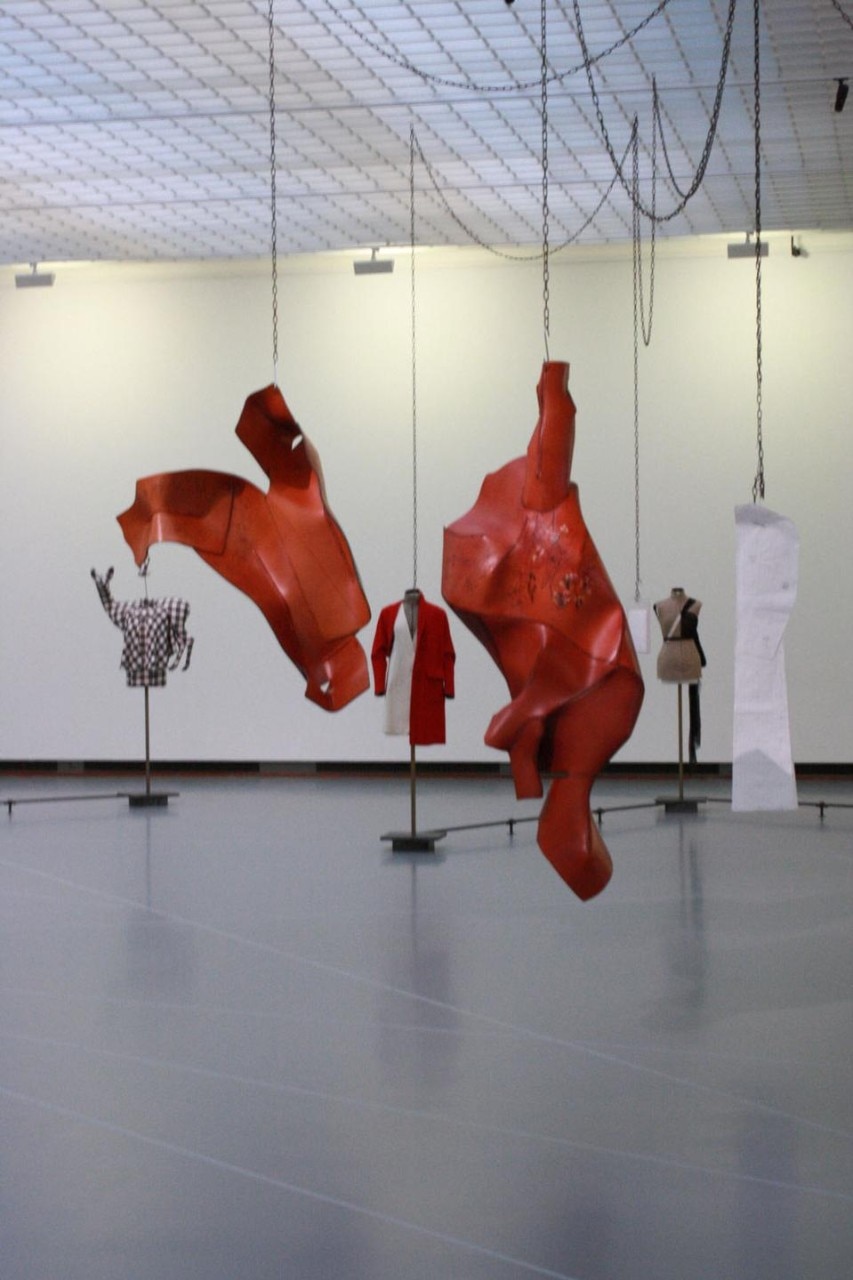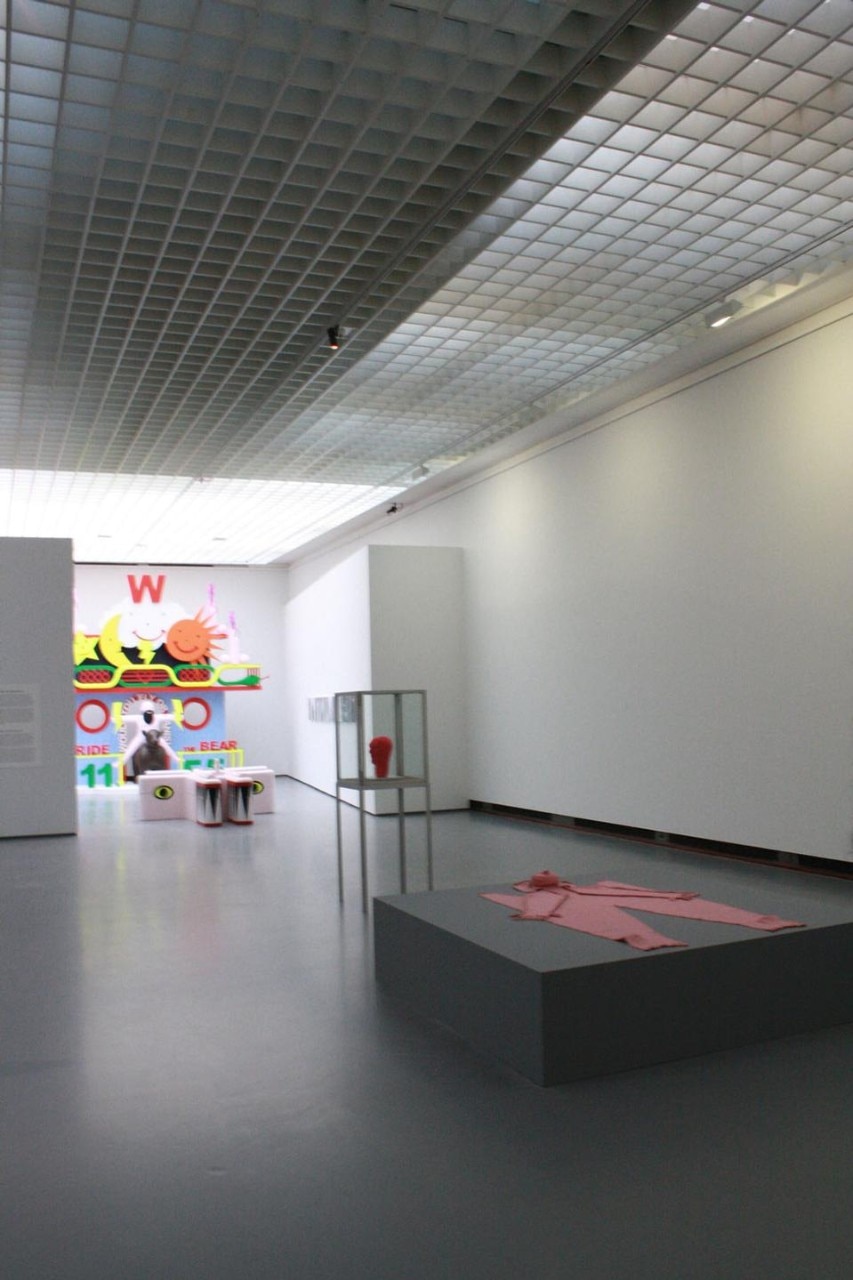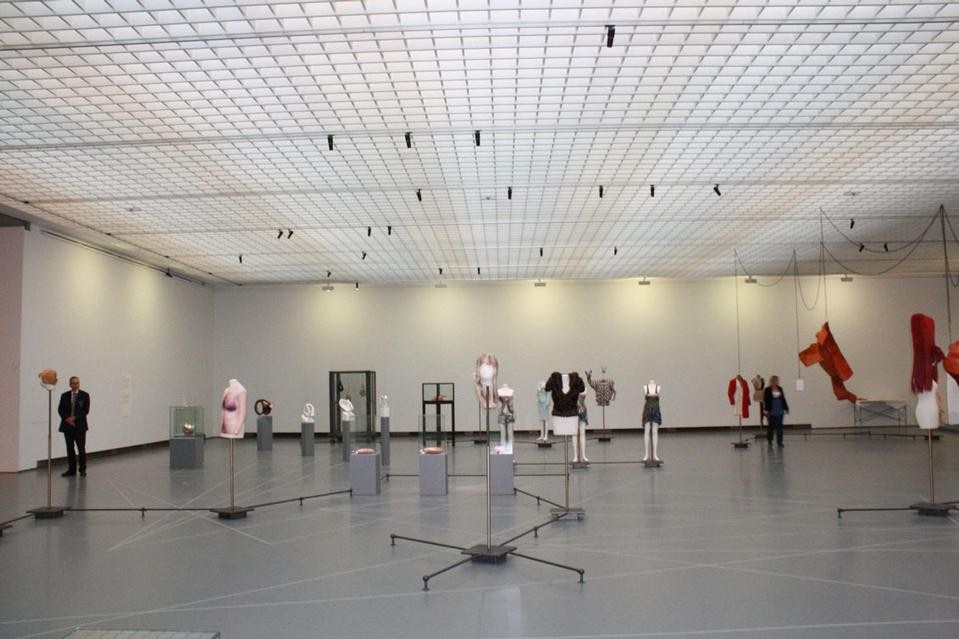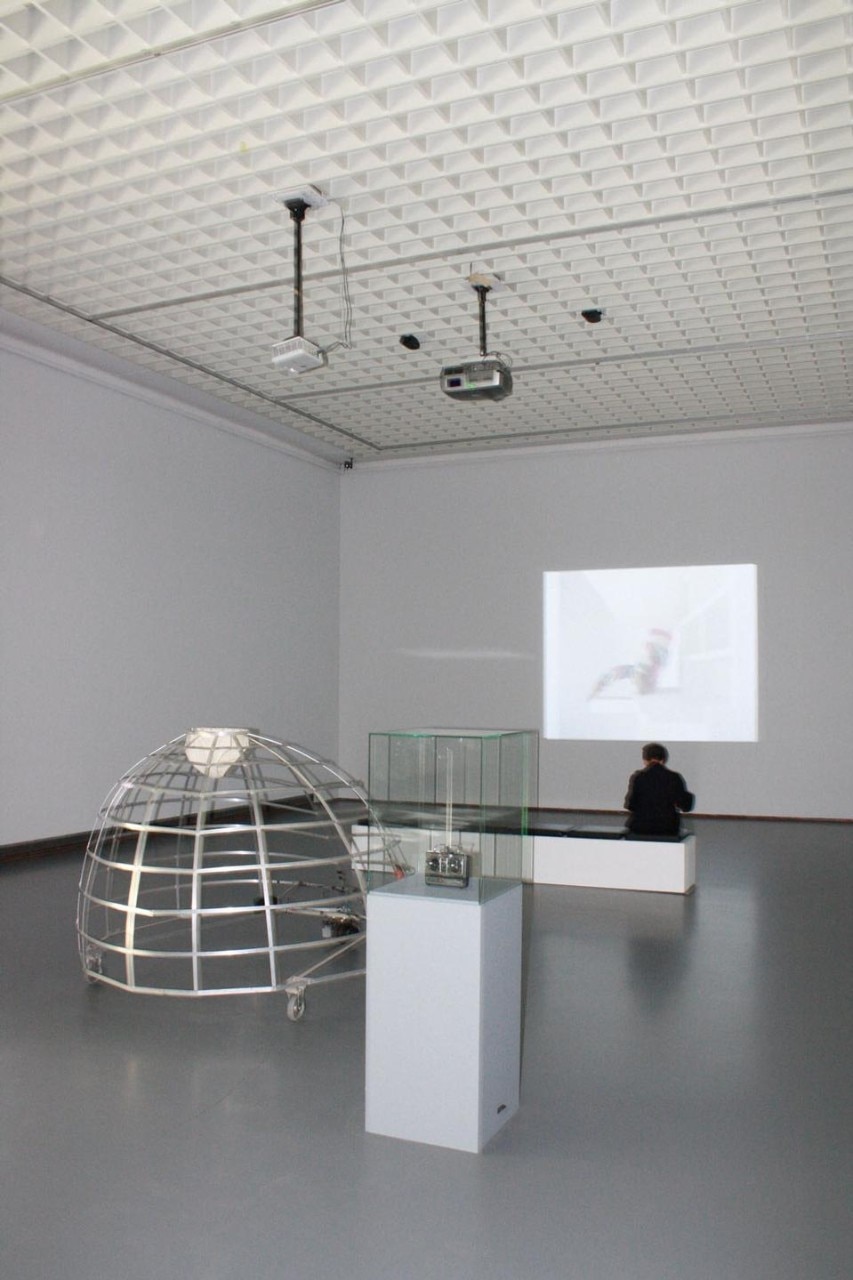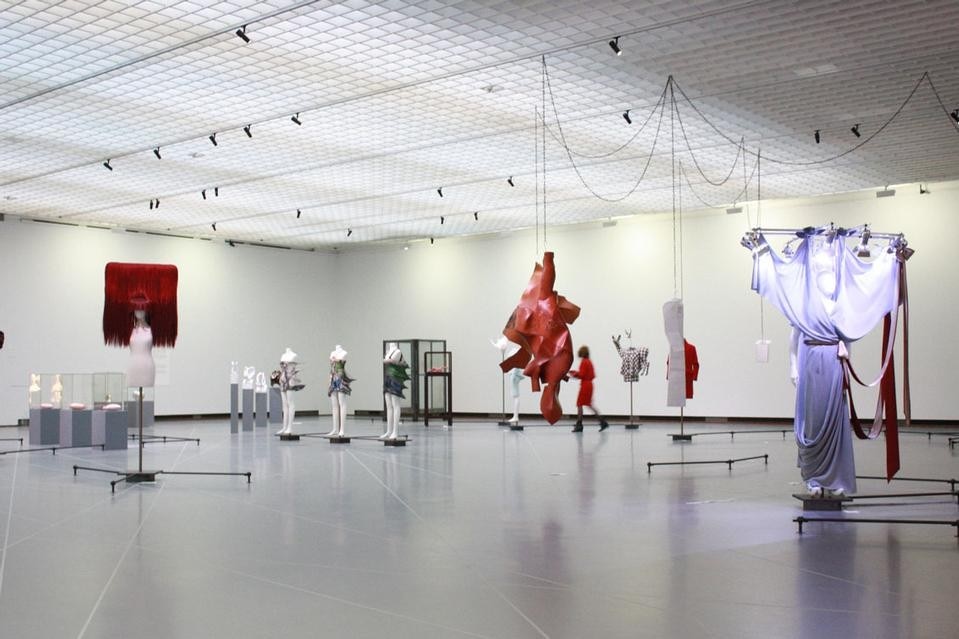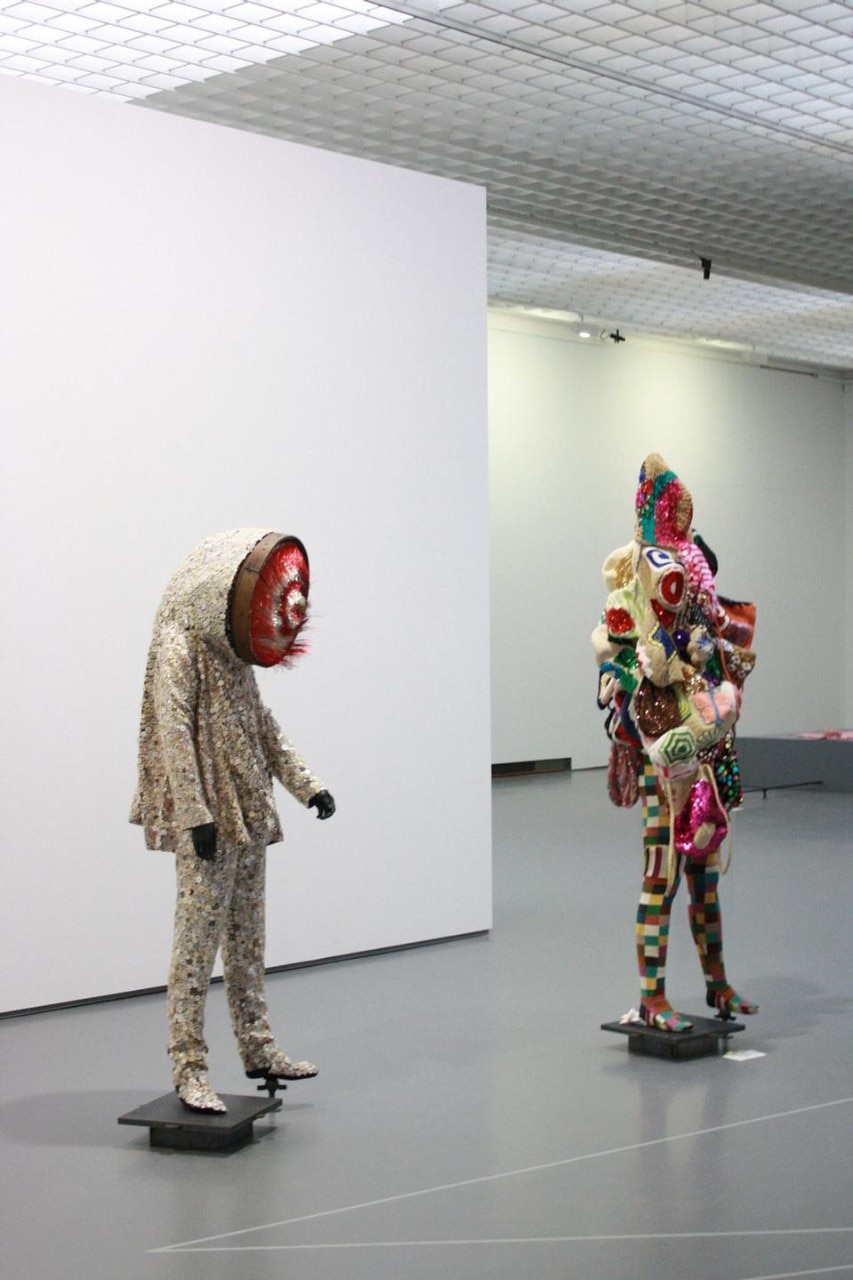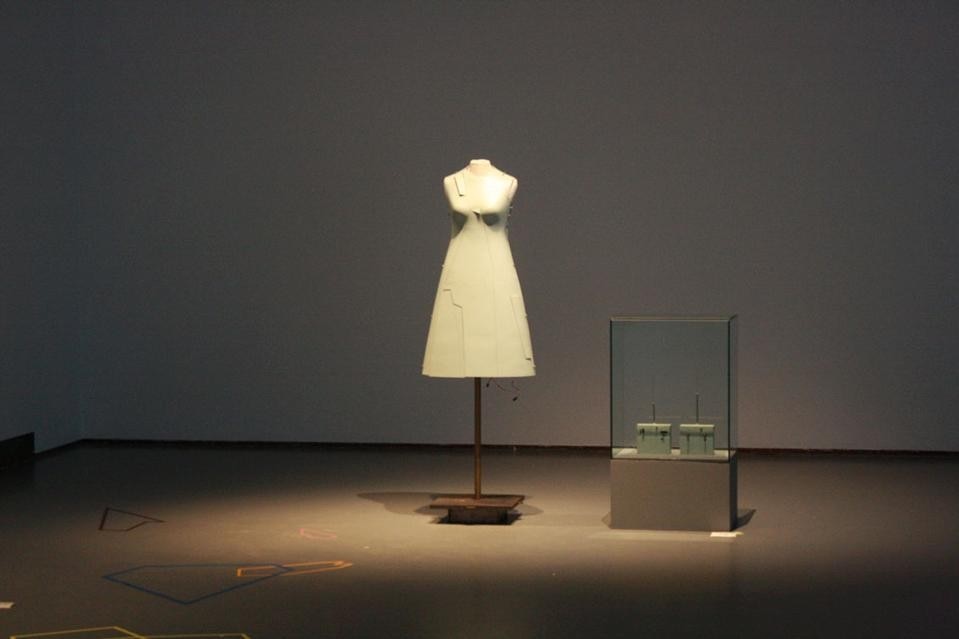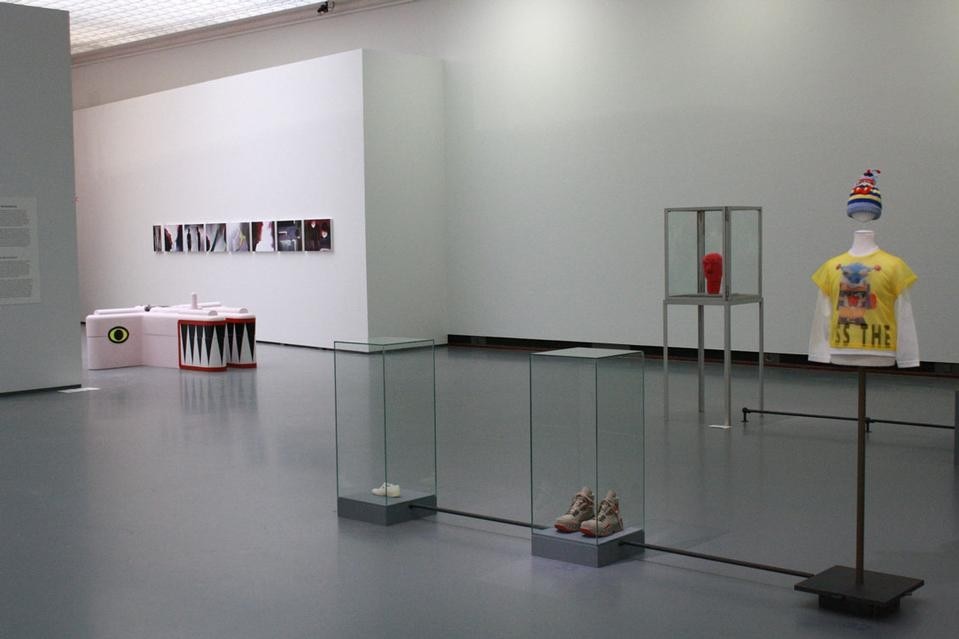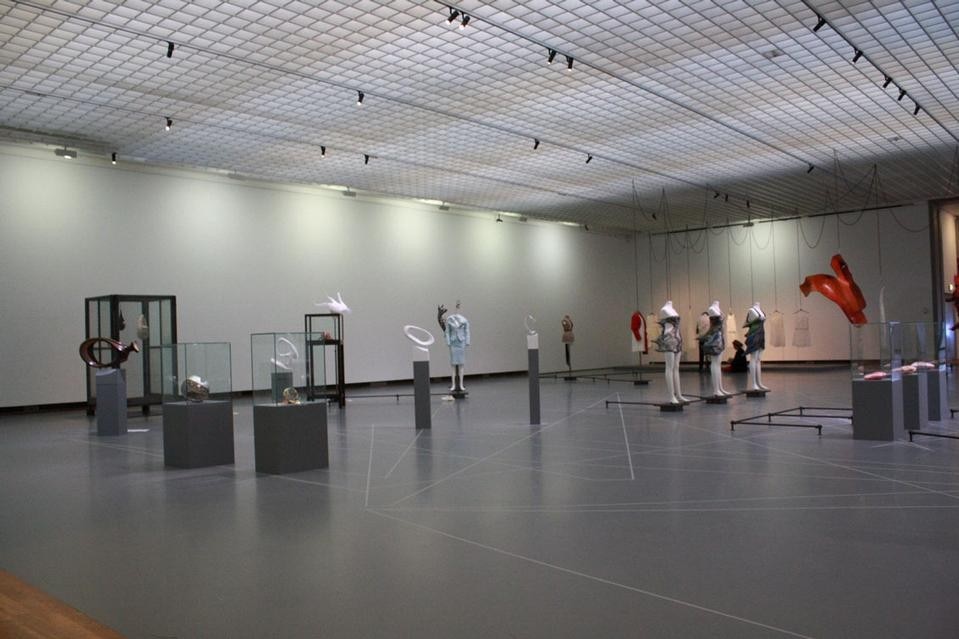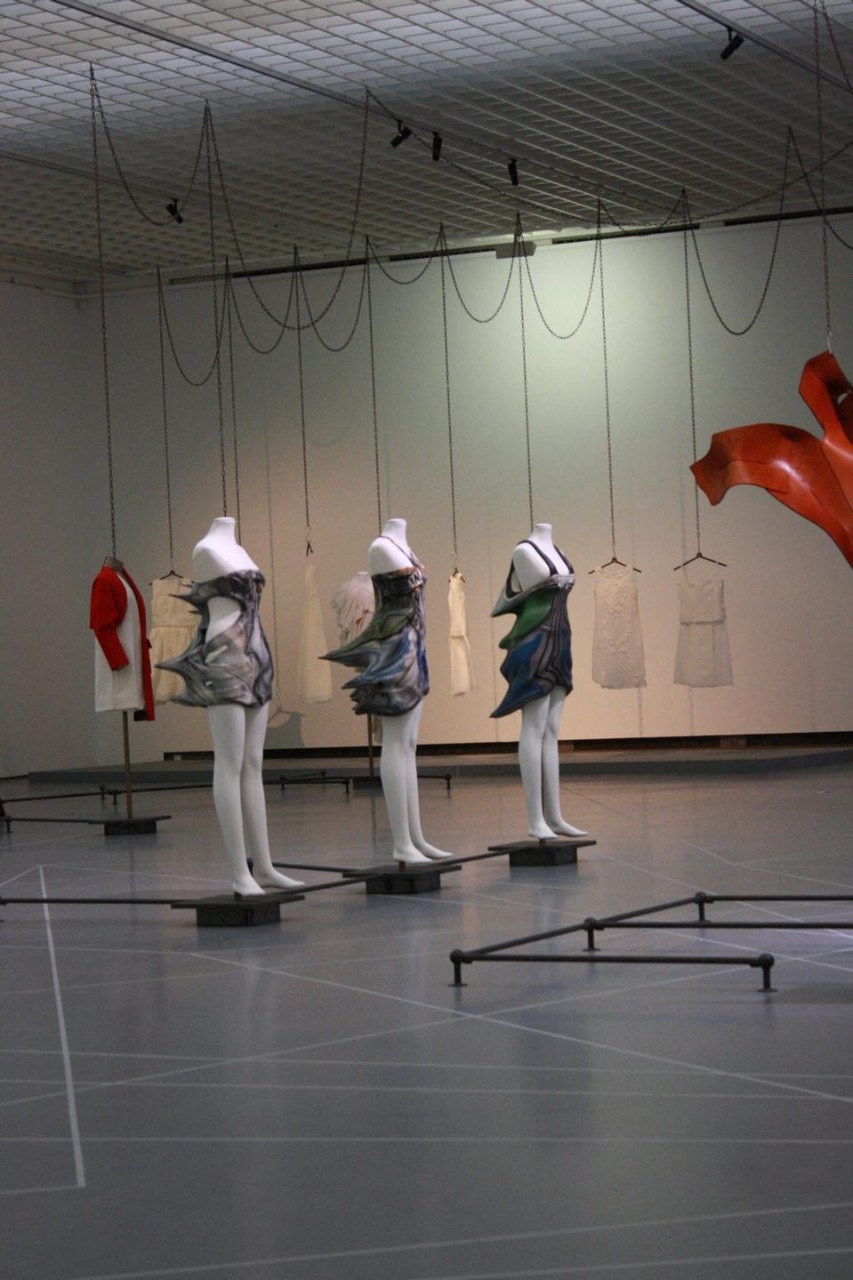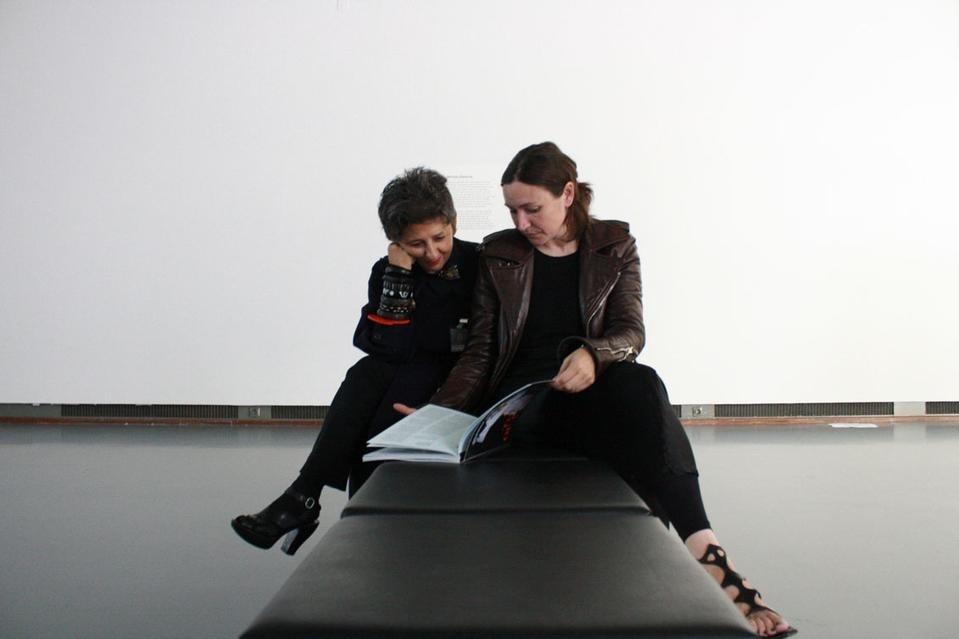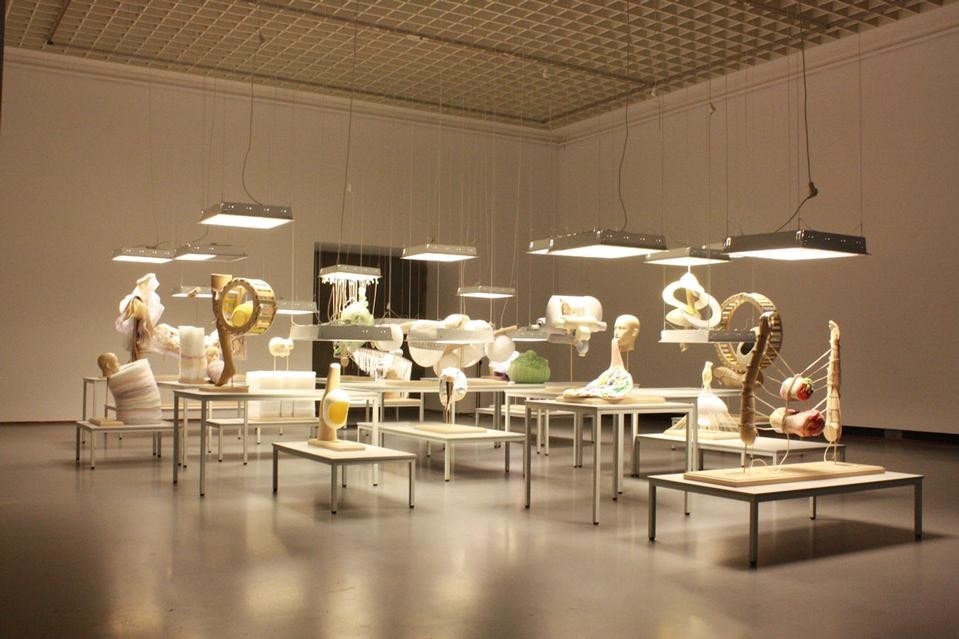“I am not interested actually in re-describing designers as artists”. (Judith Clark)
Curating exhibitions, displaying clothes
I guess the exhibition contains something about questioning thematic shows: about acknowledging the restrictions that theming imposes on a show. If we take a very broad brush, there was a shift from the chronological show to the big 1980s themed show, and this exhibition looks for alternative solutions, other ideas about designed routes. I am looking back at exhibition-maker Szeeman’s resonances if you like, where the space as well as the plinth is active, and wondering what that means when applied to dress. I think if it is difficult to see the beginning and end of a section it opens up opportunities – of all the objects being linked and at another level none of them, of them all being interpreted individually. This would leave the pattern making to the visitor. We all know that in one way or another everything is related, in this particular exhibition I have linked the objects with a kind of metal structure resembling drawings of constellations – they provide a way in to reading something that is overwhelming or infinite. So, in keeping with my other exhibitions is it as much about how to link the objects as the objects themselves – even though the objects provide the clues: it is not designed in a void.
The quality of the places
In Judith Clark Costume Gallery the space itself was so small that everything was like a single grouping. And that was the point: it was like playing around on one plinth. I had the experience, I guess as everyone setting up a gallery has, of creating a new brief for a new space and so had the feeling of starting from scratch, with the added fact that there no non-commercial galleries of dress. The Bodon Gallery [where this exhibition is situated] is the opposite, it is embued with the history of exhibitions and exhibition design within the Boijmans. This is what excited me most about the proposed show – that it should be staged there. As you know from your students at IUAV, there is not a student who does not quote the Martin Margiela show in the Boijmans pavilion curated by Thimo te Duits, there is not a curating student who has not heard of the Szeemann or Greenaway’s projects in the Bodon. I love the fact that in a space you are also having a conversation with exhibitions that have come earlier, that have occupied the space and created rhythms with objects across it.
The fashion of art
The art/fashion debate is not fascinating to me, to be honest, but it is interesting in so far as it won’t go away. I had long discussions with Peter Wollen about it leading up to his “Addressing the Century: 100 years of Art and Fashion” in 1999, ten years ago. And that was in the wake of the Biennale of Fashion in Florence that I know you were involved in, and there is still the same quality of anxiety about definition. “Addressing the Century” was about both art and fashion, about common formal and thematic qualities. This one is about fashion’s eloquence and as the title suggests, its allusions. It is about fashion. It does not use art-historical terminology, it is certainly not, for example, re-defining work such as Louise Bourgeois’ or Jana Sterbak’s in the way a new exhibition about contemporary art might, throwing new light of their oeuvre. The marriage of the two disciplines is used to illustrate the preoccupations of the fashion world primarily. The exhibition credits designers, I suppose with overlapping preoccupations, raising in the visitors minds what the similar preoccupations might be, what if anything they have in common, and with the help of the H+F Foundation, allowing the designers the freedom to take their ideas to their extremes. So the exhibition in a sense has itself generated more conceptual, more extreme fashion. This is quite recent. We are used to catwalk finale pieces going straight into museum collections, but less frequently bypassing the catwalk altogether. If the pieces created by designers are conceptually complex and are unwearable we come up against a category crisis. You know more about this than me, Maria Luisa, but your interest I know lies in what happens conceptually post production rather than pre-production I think.
Allusions and resonances. Constellations and geographies
Exhibitions are so important and the first viewing of artwork is absolutely imperative in the defining of that object . It has been fantastic to be involved in this exhibition’s intersection between the exhibition design as a whole and the installation requirements of the designers and in particular the new commissions. Usually you have fixed objects as you start designing with a fixed list – here the objects – or installations as they became changed throughout the process, right up until a few weeks before the opening. Sometimes growing by 3-4 metres, sometimes growing a room around them, sometimes screens. Negotiating space always makes me think of what Anna Piaggi told me about her Doppie Pagine for Vogue Italia, that it was like squatting in a small space. Here it was like mutual squatting, the designers and I accommodating each other as we went along. It has been interesting to me how attuned designers are to the space surrounding their work, the conversations were never just about the physical piece: Naomi Filmer’s sculptures dramatise the space around the face, inhaling and exhaling air, Anna-Nicole Ziesche’s film Childhood Storage turns us upside down to gaze at the ceiling of her childhood bedroom, Viktor and Rolf have built a spiral corridor to disorientate us before finding their fragmented bottle – does that make them curators, exhibition designers? There are many more titles here than just artist or designer.
Personal genealogies
One can’t escape ones own history and context, looking at the list of designers many I have collaborated with for over 10 years. Dai Rees, Simon Thorogood, Naomi Filmer, have kept their conceptual bias, often funding their practice with academic work, and Anna Nicole Ziesche whose work is uncompromising and profound, and was the first student to ever graduate from the MA Fashion at Central Saint Martins with a film instead of a collection, it has been exhilarating weaving them into a broader web. The exhibition – as all exhibitions, reveal affinities, things emerge both about the curators preferences. Feminist Art, early 1970s installation art came up in conversation time and time again (it is where there are most conceptual experiments using dress for obvious reasons) and the exhibition, given it is about allusion allowed one to follow a train of thought and populate it with other objects of exhibition elements: for example, I know that the way the chains supporting Dai’s work are draped allude to Eva Hesse’s Untitled Rope from 1970 – which I thought of when I saw Francesco Vezzoli’s installation Greed at the Gogosian which you, Maria Luisa took me to see in Rome, and one of the posters featured Eva Hesse. Objects are linked through personal history – it is not obvious that draped chains have a connection to a perfume bottle in the next room, but these are the way that exhibitions are always layered in ways that the visitors are always only partly aware of. That is why it is always strange to me when exhibitions try to fix meaning through text panels – as if you could ever give a clear account of the real motivations.
Works, museum, collecting, clientele
The exhibition sits at an interesting point within curatorial debates, I think it makes the show even more strangely contemporary, it has the new commissions talking about fashion whilst bypassing the market, it has a selection from the museum archive itself, which has its own 20 year history, and as a curator it is always interesting to select and therefore in some way reconfigure an archive, and the exhibition has extraordinary international loans, Louise Bourgeois’s Cell XIX, Jana Sterback’s Remote Control Crinoline, Helen Chadwick’s soft anatomical cushions from her college studio work in the early 1970s. Objects that have been evoked by the conversations had and the descriptions of the emerging commissions, it was like filling in the gaps of a family tree whilst knowing it is one of an infinite number. The pieces are all exhibited in a colourless room, on colourless plinths so as to emphasize the sculptural or formal qualities of the objects. Fashion exhibitions are often too frightened of unmediated objects, they fear the competition from the catwalk – I was devastated that the museum marketing department chose a catwalk image for their press, it was like a loss of nerve. Judith Clark
Maria Luisa Frisa is a critic and independent curator. She is interested in the complexity of the contemporary imagination and in the overlapping areas between fashion, art, design and communication. She is the director of the Marsilio Editori's "Mode" series, and runs the degree course in design at the IUAV University in Venice.
Judith Clark, who together with José Teunissen curated “The Art of Fashion: Installing Allusions”, is also responsible for the design of the exhibition and something of a leading light in the as yet brief history of fashion curating. She has created key exhibitions such as “Spectres: When Fashion Turns Back” and Anna Piaggi: “Fashion-ology”, that altered and forged new ground in terms of the relationship between clothing and the museum, memory and imagination, criticism and history. She was also the first to experiment with fashion as an exhibition piece in her gallery, the Judith Clark Costume Gallery in London. In this space between 1998 and 2002 she brought fashion and art out of the old stereotypical set-up and moved them onto another territory where they could form an unprejudiced dialogue. Clark graduated in architecture and is director of the MA in Fashion Curating at the London College of Fashion.
